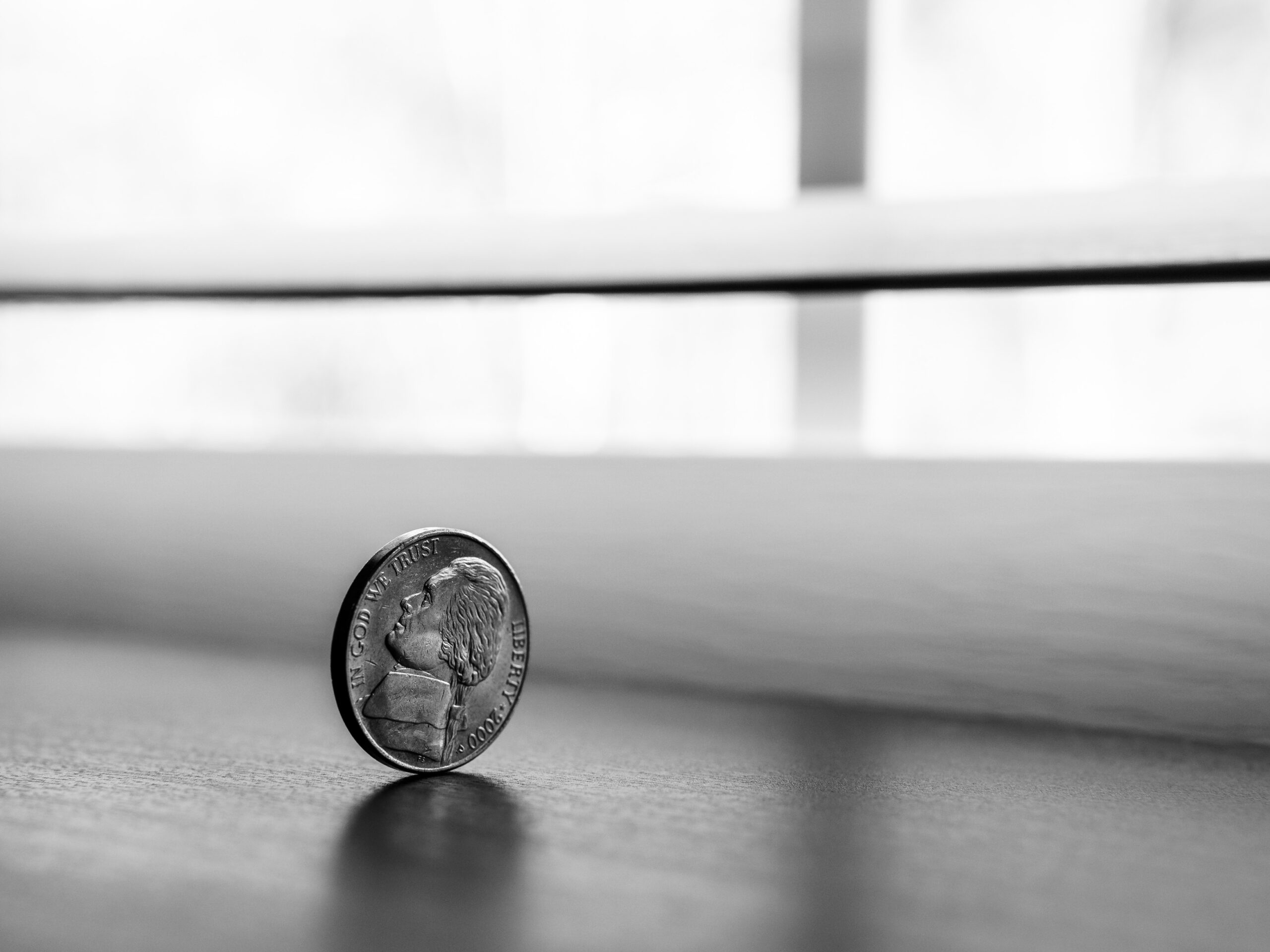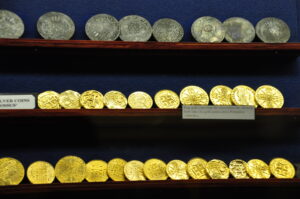Converting Your Retirement Account Into Precious Metals
If you’re looking for a way to diversify your retirement portfolio, consider converting it into precious metals. By doing so, you can potentially protect your savings from inflation and market volatility while also benefiting from the long-term growth of these assets.
However, before making any decisions, it’s important to understand the benefits and risks involved in converting your retirement account into precious metals.
One of the primary benefits of investing when you convert 401k to precious metals is that they have historically been a hedge against inflation and economic instability. Unlike paper currencies or other financial instruments that can be affected by market fluctuations, precious metals such as gold and silver tend to hold their value over time.
Additionally, owning physical assets like gold or silver can provide a sense of security and tangible value that other investments may not offer. However, there are also risks involved with this type of investment strategy that should be carefully considered before making any decisions.
Understand the Benefits and Risks of Converting Your Retirement Account
If you’re considering converting your retirement account into precious metals, it’s important to understand both the potential benefits and risks involved.
One of the main benefits is that precious metals can serve as a hedge against inflation and economic instability. Unlike paper currency, which can lose value over time, precious metals have a history of holding their value and even increasing in value during times of economic uncertainty.
However, there are also risks involved with converting your retirement account into precious metals. For one, the process can be complicated and may involve additional fees or taxes. Additionally, the value of precious metals can be highly volatile and subject to market fluctuations. This means that while they may increase in value at times, they could also experience significant drops that could negatively impact your retirement savings.
It’s important to carefully evaluate both the potential benefits and risks before making any decisions about converting your retirement account into precious metals. Consider consulting with a financial advisor who specializes in this area to help guide you through the process and ensure that it aligns with your overall retirement goals and risk tolerance level.
Ultimately, whether or not to convert your retirement account into precious metals is a personal decision that should be based on careful consideration of all factors involved.
Choose the Right Type of Precious Metal Investment
To make the most out of your investment, it’s crucial to select the ideal form of precious metal. You have several options when it comes to investing in precious metals, including gold, silver, platinum, and palladium.
Each metal has its own unique properties and characteristics that can affect its value over time. Gold is a popular choice for investors because of its historical significance and stability. It has been used as currency for thousands of years and is still considered a safe haven asset during times of economic uncertainty.
Silver is also widely traded and offers a more affordable option for investors looking to diversify their portfolio. Platinum and palladium are less commonly traded than gold or silver but offer potential benefits as well. They are both used heavily in industrial applications such as catalytic converters, which can drive demand for these metals during economic growth periods.
Ultimately, the right type of precious metal investment for you will depend on your individual financial goals and risk tolerance.
Consult with a Financial Advisor
To successfully navigate the world of precious metal investments, it’s essential to consult with a financial advisor.
Start by researching potential advisors in your area who specialize in this field. Then, sit down with them and discuss your goals and risk tolerance to determine the best investment strategy for you.
Remember, working with an expert can help ensure that you make informed decisions and maximize your returns.
Research Potential Advisors
Don’t hesitate to seek out a trustworthy advisor who can guide you through the process of converting your retirement account into precious metals. While it may seem daunting, doing your own research on potential advisors and scheduling consultations is the first step towards ensuring that you make informed decisions about your financial future.
Here are three reasons why finding a good advisor is crucial:
- They can provide personalized advice: An experienced financial advisor will take the time to understand your unique circumstances and goals before recommending any specific investment strategies. This means that they’ll be able to tailor their advice to suit your needs, rather than simply offering generic recommendations.
- They can help you avoid costly mistakes: Converting a retirement account into precious metals involves navigating complex tax laws and regulations. Without the right guidance, it’s easy to make mistakes that could end up costing you a lot of money in penalties or lost returns.
- They can offer ongoing support: Even after you’ve made the initial investment, a good advisor will continue to monitor market trends and provide guidance as needed. This ensures that your portfolio stays aligned with your long-term goals, even if economic conditions change over time.
Discuss Your Goals and Risk Tolerance
Before you start investing, it’s important to chat with your advisor about what you hope to achieve and how much risk you’re comfortable taking on. This will help them determine the best investment strategy for your situation.
Different precious metals have different levels of risk associated with them, so it’s crucial to consider this when making your investment decisions.
Your goals are also an essential aspect of this conversation. Are you looking for long-term growth or short-term gains? Do you want a steady stream of income or a lump sum at the end?
Your advisor can help guide you towards investments that align with your objectives and provide the greatest potential return. By discussing your goals and risk tolerance upfront, you can feel confident in your investment choices and work towards achieving financial success in retirement.
Set up a Self-Directed IRA
If you’re considering setting up a Self-Directed IRA, there are two key points to keep in mind. First, choose a custodian that aligns with your investment goals and values. The custodian is the entity that will hold your account and facilitate transactions on your behalf.
Secondly, transferring funds is a crucial step in the process. This involves moving money from an existing retirement account into the new Self-Directed IRA. You can do this through a direct transfer or rollover.
Make sure to keep these two points in mind when setting up your Self-Directed IRA.
Choose a Custodian
Once you’ve made the decision to convert your retirement account into precious metals, it’s important to choose a custodian that you trust and feel comfortable working with. A custodian is a financial institution or individual who holds and manages your assets on your behalf.
When it comes to precious metals, not all custodians are created equal, so doing your research is crucial. Here are three things to keep in mind when choosing a custodian for your precious metal IRA:
- Reputation: Look for a reputable company with a solid track record in handling precious metals. Check online reviews and ratings from independent review sites to ensure they have satisfied customers.
- Fees: Custodians charge fees for their services, but you want to make sure you’re not overpaying. Compare fees between different companies and ask about any hidden charges before making a decision.
- Storage options: Precious metals must be stored securely, so check what storage options the custodian offers. Some may offer only one location while others have multiple locations across the country or even internationally for added security and flexibility.
Transfer Funds
To start the process, simply transfer your funds to a trusted custodian who specializes in precious metals. This step is crucial because it ensures that your retirement account complies with IRS regulations.
The custodian will guide you through the process of transferring funds from your existing retirement account into a new self-directed IRA that allows for investment in precious metals. The transfer process typically takes around two weeks and requires paperwork to be submitted by both your current custodian and the new one.
It’s important to work closely with the custodian during this time to ensure a smooth transfer without any hiccups. Once the funds have been successfully transferred, you can then begin investing in precious metals such as gold, silver, platinum or palladium within your self-directed IRA.
Monitor and Rebalance Your Portfolio
As you monitor and rebalance your portfolio, it’s important to track market trends and adjust your investments as needed. By keeping an eye on the stock market and economic indicators, you can make informed decisions about where to allocate your money.
Regularly reviewing your portfolio and making necessary changes can help ensure that you stay on track towards reaching your financial goals.
Track Market Trends
You’ll love keeping an eye on market trends when converting your retirement account into precious metals. It’s important to stay up-to-date with the latest happenings in the market, as it can greatly impact the value of your investment.
Here are some tips for tracking market trends:
- Follow reputable financial news sources and pay attention to any significant changes or events that could affect the precious metals market.
- Keep an eye on inflation rates, as they often correlate with increased demand for precious metals.
- Monitor global economic and political developments, as they can also have a major impact on the price of gold and other precious metals.
- Consider using technical analysis tools to better understand price movements and identify potential buying or selling opportunities.
By staying informed about these market trends, you’ll be able to make more informed decisions about how to allocate your retirement funds into precious metals. Plus, tracking these trends can be both fun and rewarding, as you’ll feel more connected to your investments and better equipped to manage them over time.
Adjust Your Investments as Needed
Now that you’ve been tracking the market trends, it’s important to adjust your investments as needed. This means being proactive and keeping an eye out for any changes or shifts in the market that may affect your retirement account.
Remember, the goal is to protect and grow your wealth over time. One way to adjust your investments is by diversifying your portfolio with precious metals. These assets tend to hold their value and have historically performed well during times of economic uncertainty.
By converting a portion of your retirement account into gold, silver, or other precious metals, you can add a layer of protection against inflation and market volatility. Just be sure to do your research and work with a reputable dealer who can help guide you through the process.
Conclusion
Congratulations on taking the first step to potentially converting your retirement account into precious metals! As you now know, there are numerous benefits and risks associated with this decision, so it’s important to carefully consider your options.
By choosing the right type of precious metal investment and consulting with a financial advisor, you can ensure that you make informed decisions and protect your retirement savings.
Once you’ve set up a self-directed IRA and started investing in precious metals, remember to regularly monitor and rebalance your portfolio. This will help you stay on track towards achieving your retirement goals.
With proper planning and management, converting your retirement account into precious metals can be a smart move for securing your financial future.…


 but they can be fun to collect. They also have a lot of aesthetic and historical value. These coins have a lot of different values and can make for a great gift.
but they can be fun to collect. They also have a lot of aesthetic and historical value. These coins have a lot of different values and can make for a great gift.